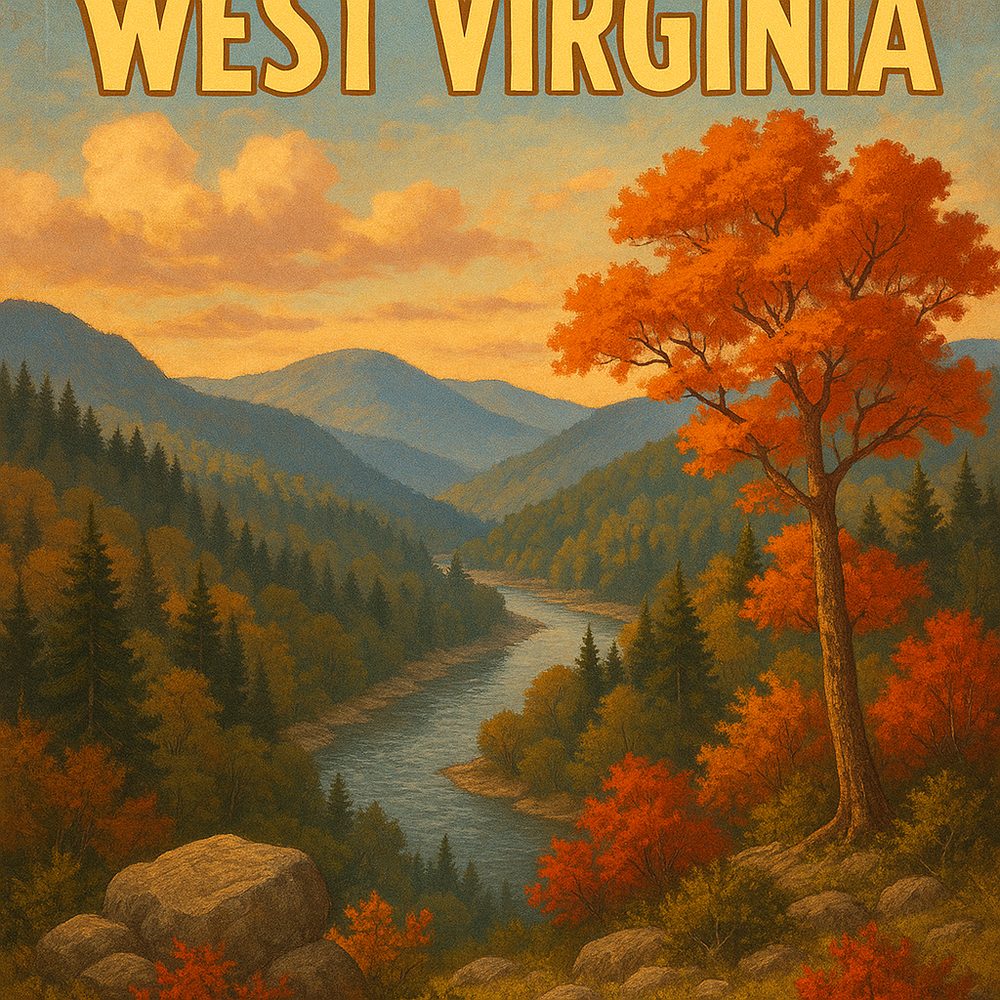Indigenous Culture and Heritage Sites to Explore in West Virginia

Nestled about 20 miles northeast of Charleston, the Grave Creek Mound Archaeological Complex in Moundsville offers a tangible connection to the ancient Adena culture that flourished in West Virginia over 2,000 years ago. The massive earthen mound, towering roughly 69 feet high and spanning nearly 300 feet across at its base, is one of the largest conical burial mounds in the United States. Visitors can explore the on-site museum, which displays artifacts recovered from the mound, including intricately carved stone tablets and ceremonial objects. Walking the grounds, you feel the weight of millennia beneath your feet, and the interpretive center’s exhibits vividly illustrate the Adena people’s sophisticated social and spiritual systems. Early spring, when the surrounding woods begin to bloom, is an especially evocative time to visit, as the emerging greenery contrasts with the mound’s ancient earthwork.
In the eastern part of the state, near the town of Point Pleasant about 90 miles west of Charleston, the Tu-Endie-Wei State Park marks the confluence of the Ohio and Kanawha Rivers. This site is known not only for its natural beauty but also as a place of historical significance for the Native American peoples of the region. The park is home to a statue commemorating Chief Cornstalk, a leader of the Shawnee tribe, whose legacy is deeply tied to this land. Strolling along the riverfront trails or pausing at the monument offers visitors a moment to reflect on the Shawnee’s complex history and their efforts to negotiate peace during the turbulent colonial period. Late afternoon light here often glimmers off the water, creating a serene space for contemplation.
Travel to the northern panhandle near Wheeling, roughly 10 miles east, to visit the West Virginia Independence Hall, housed in a structure that once served as the Wheeling Custom House, built in the mid-19th century. While primarily known for its role in statehood, the building also contains exhibits highlighting the region’s indigenous history, including displays on the Ohio Valley tribes such as the Delaware and Shawnee. The hall’s architecture itself, with its classic lines and robust stonework, provides a striking backdrop to these stories of cultural survival and resistance. Visiting in the fall, when the leaves blaze in fiery reds and golds, enhances the experience, wrapping the history in vibrant natural colors.
Further south, the Kanawha State Forest near Charleston, about 10 miles southeast, offers a more immersive encounter with indigenous heritage through its extensive trail system. The park’s interpretive signage along the Clay Run Trail educates hikers about the Native American use of the land for hunting and gathering long before European arrival. The trail, a moderate 3-mile loop through hardwood forest, passes several overlooks that offer sweeping views of the Kanawha Valley below, where indigenous peoples once roamed freely. Springtime, when wildflowers carpet the forest floor, is the best season to hike here, as it evokes the landscape’s appearance centuries ago.
In the heart of the Appalachian Mountains, about 45 miles southeast of Morgantown, the Monongahela National Forest shelters several sites rich in Native American history. One highlight is the Seneca Rocks, a dramatic crag of quartzite rising nearly 900 feet above the North Fork River valley. While today it draws rock climbers and hikers, these formations were also significant to the indigenous Seneca people, who used the area for vision quests and seasonal hunting camps. The strenuous 3-mile trail to the summit rewards visitors with panoramic views of the rugged terrain, revealing a landscape that has shaped human experience for generations. Early autumn, when cooler temperatures prevail and the foliage turns, enhances the visual impact.
On the eastern edge of the state near Harpers Ferry, about 70 miles east of Morgantown, the Harpers Ferry National Historical Park offers a layered narrative where indigenous presence intersects with colonial and Civil War history. The park’s visitor center includes exhibits on the native tribes that inhabited the Shenandoah Valley and Potomac River regions, such as the Piscataway and Shawnee. Walking the historic streets or taking the scenic Appalachian Trail through the park, visitors can imagine the cultural exchanges and conflicts that played out on this strategic ridge. Spring and early summer bring lush greenery and wildflowers, adding vibrancy to the park’s rich stories.
On the western side of West Virginia, near the town of Grafton about 30 miles east of Clarksburg, lies the Pricketts Fort State Park, a reconstructed 18th-century pioneer fort. While the fort itself reflects colonial frontier life, the park also interprets the interactions between settlers and the Native American tribes of the region, including the Iroquois and Shawnee. The site hosts living history demonstrations, where guides in period clothing portray the challenges and negotiations of early settlers and indigenous groups. The adjacent trails wind through forests once contested ground, offering a tangible sense of the layered history. Late spring and early fall are ideal times to visit, when the weather is mild and the park’s natural beauty is fully on display.
Together, these destinations weave a rich tapestry of indigenous heritage across West Virginia’s diverse landscapes. Each place offers a unique window into the people who lived, hunted, and built communities on this land long before modern highways and towns. Whether gazing from the heights of Seneca Rocks or contemplating the ancient earthworks at Moundsville, visitors can connect deeply with the enduring legacy of the state’s first inhabitants.